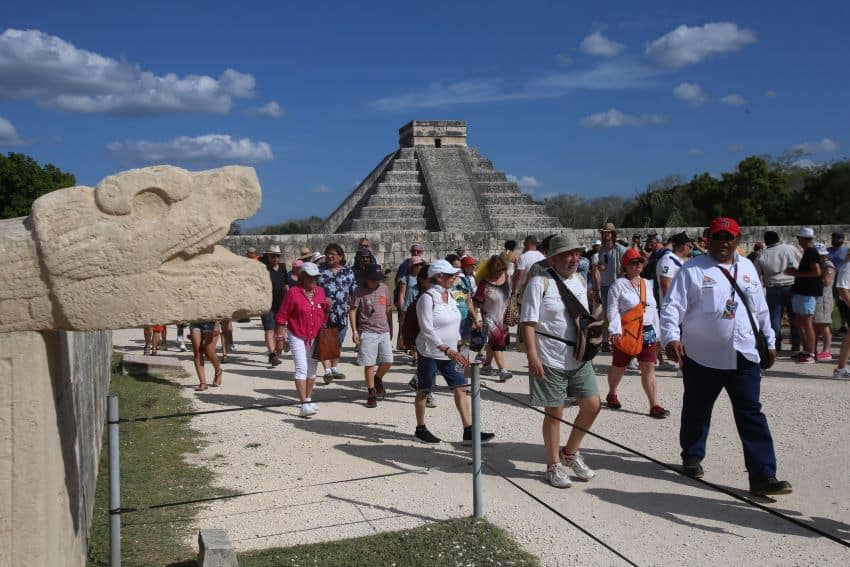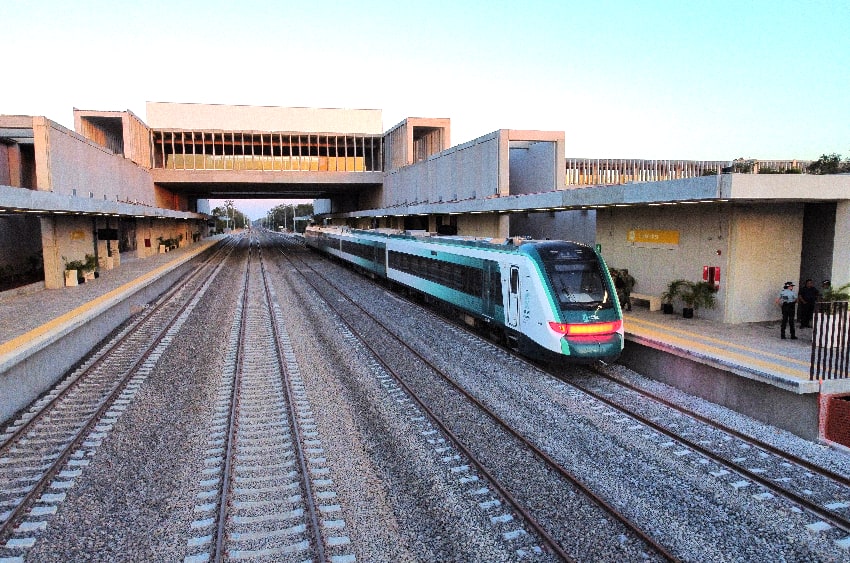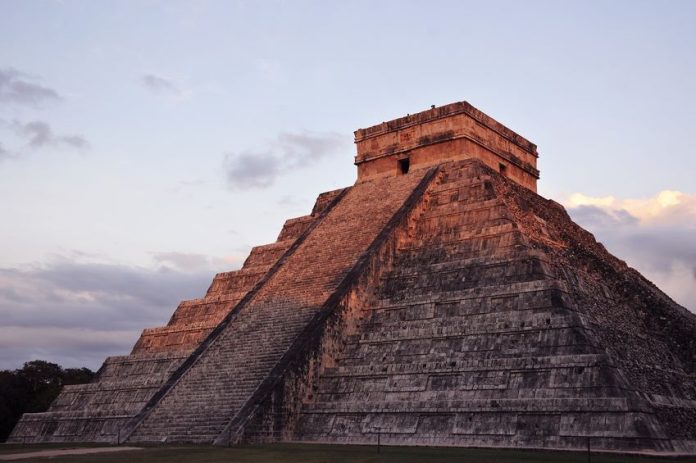Chichén Itzá continues to be Mexico’s most popular archaeological site.
According to data from the National Institute of Anthropology and History (INAH), entries to the ancient pyramid complex increased by 8.6% annually in the first half of the year to 1.18 million.

Differentiating international and domestic travelers, Chichén Itzá saw a 26.4% increase in international tourists and a 19% decrease in domestic tourists.
Meanwhile, Teotihuacán and Tulum, Mexico’s most visited archaeological sites after Chichén Itzá, saw fewer visitors in the first half of the year.
According to the INAH, Teotihuacán, near Mexico City, saw entries fall by 9.6% — from 939,842 visitors to 807,074. In Quintana Roo, 585,078 tourists visited Tulum, down 23.6% from 765,510 the previous year.
The next most popular sites are Monte Albán in Oaxaca, which saw its entries slump by 20%, and Tajín in Veracruz, which saw 6.8% fewer visitors in the first half of the year. These sites, along with Palenque in Chiapas, received fewer than half a million visitors each last year.

Chichén Itzá was also Mexico’s top archaeological site in 2023, with 2.33 million tourists, followed by Teotihuacán with 1.78 million visitors and Tulum with 1.30 million.
New attractions highlight the cultural history of Chichén Itzá
New attractions in and around Chichén Itzá have improved tourists’ experience in the area.
In February, President Andrés Manuel López Obrador inaugurated the Gran Museo Maya de Chichén Itzá (The Great Maya Museum of Chichén Itzá), which houses 1,000 artifacts pertaining to the Maya world. In the museum, visitors can see pieces that were uncovered during the construction of the Maya Train, as well as elaborate models of the Sacred Cenote at Chichén Itzá and of “El Castillo,” the majestic Temple of Kukulcán in the site’s main plaza.
The museum is accessible from the Chichén Itzá station of the Maya Train. Other sites accessible from this station include the town Pisté de Chichén Itzá and the archaeological site of Chichén Itzá itself.
Additional novelties in the area include the visitors center in Chichén Itzá, which is 60% complete according to the INAH’s latest report, and which will provide tourist, archaeological and cultural information to travelers arriving on the Maya Train.
With reports from La Jornada Maya, Por Esto, Forbes
